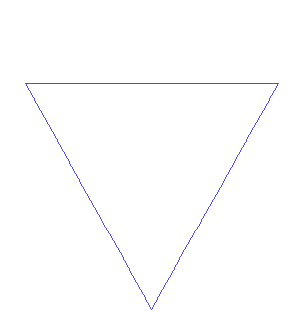Snowflake Plotting
Where ever you look, you will find endless novel plotting methods. This can be overwhelming as there is no one answer to everyone, furthermore, there are different aspects of each method that speak to us. So Where do you start? What are you supposed to do? This article will explore one such method, as described by award winning author Ralph Ingermanson.
eg: Hermione Granger
Smart witch that provides the brains behind defeating the dark lord.
Wants to be the smartest student the school has seen
Wants to expose the corruption in the staff body.
Struggles to participate due to loyalty to the rule and a desire to be perfect.
Learns that there are things more important than knowledge - such as friendship. Becomes more relaxed in regard to rule breaking.
Hermione is bullied and tries to escape her persecutors. She lands up getting attacked by a troll which she and newfound friends defeat. Hermione provides the group with all essential intelligence on the nature of their opponent. She works out what is hidden in the school. When they are on their way to defeat the corrupt teacher, she correctly deciphers a key riddle.
The Snowflake Method
So called due to the fractal nature of the snowflake, the snowflake method is built on the mathematical Koch snowflake model. While this may sound daunting, you need absolutely no mathematical ability to use this method. The message that this model is meant to convey, is that by building ideas on ideas on ideas creates infinite possibility and complexity. the Koch model shows this by compounding triangles.
So what is this method and how does it work? Ingenmanson has broken the entire experience of plotting into 10 basic steps, employing the concept of building and expanding off a central idea. For this article, i am going to draw from the Harry Potter books in order to illustrate the ideas presented.
STEP 1: One Sentence Summary
This step represents that very first triangle. Although this may sound relatively simple, it perhaps the most complex of all the steps. This requires you to come up with a single sentence to boil your entire plot into one sentence. This sentence shouldn't be more than 15 words long, hook attention, give some indication of motive and the larger picture. Ralph Ingenmanson suggests setting aside an entire hour to work on this. He also suggests avoiding using any character names within this, rather a description - for example, use 'evil wizard' as opposed to 'Voldemort'. For an idea of what your sentence should look like, have a look at the one-line blurbs for New York Bestsellers.
eg: Boy wizard is tasked with defeating the most evil wizard of all time.
eg: Boy wizard is tasked with defeating the most evil wizard of all time.
STEP 2: Paragraph Summary
Now that you have gone to all that effort to compress your ideas into the succinct sentence you have constructed, it is time to start expanding on it. The paragraph should be no more than 5 sentences long, with each sentence completely encompassing an idea. The paragraph should give anyone reading it an idea of setting, pivotal events, and the ending. If you're lucky, this should take you approximately and hour.
eg: Boy wizard ventures into the secret magical community and school in London. The boy and his friends fight a troll that threatens the students. They get into trouble after getting caught disposing of a dragon. Boy students and his friends discover potentially nefarious events among the staff of the school. The children defeat the teacher behind the events, who turns out to be assisting the evil wizard.
eg: Boy wizard ventures into the secret magical community and school in London. The boy and his friends fight a troll that threatens the students. They get into trouble after getting caught disposing of a dragon. Boy students and his friends discover potentially nefarious events among the staff of the school. The children defeat the teacher behind the events, who turns out to be assisting the evil wizard.
STEP 3: Meet your Characters
Basic events expressed, its time to meet your cast. At this stage of the process, it is not necessary to compile extensive dossiers of your main characters, just a short summary that you will revisit later. This process is very similar to the plotting that you have doe so far and should expound on a few key points. If you are using world anvil to create your characters, you can look at this as creating a stub article, populating only the necessary fields. This should give you an idea of the role of the character within the story. Ingermanson lists seven points that this summary should include:
- Name of the Character.
- One line summary of character's role in the narrative.
- Character motivation - what do they want, what are they hoping to gain in the abstract sense?
- Character goal - what do they want to achieve or receive as a result of their role?
- What is holding the character back? Internal or external conflict.
- Character growth and character arc.
- A paragraph expounding on the characters role.
eg: Hermione Granger
Smart witch that provides the brains behind defeating the dark lord.
Wants to be the smartest student the school has seen
Wants to expose the corruption in the staff body.
Struggles to participate due to loyalty to the rule and a desire to be perfect.
Learns that there are things more important than knowledge - such as friendship. Becomes more relaxed in regard to rule breaking.
Hermione is bullied and tries to escape her persecutors. She lands up getting attacked by a troll which she and newfound friends defeat. Hermione provides the group with all essential intelligence on the nature of their opponent. She works out what is hidden in the school. When they are on their way to defeat the corrupt teacher, she correctly deciphers a key riddle.
STEP 4: Five paragraph Summary
By this stage of the process you should have a general idea of the bulk of the format of your book. Bearing in mind what you have discovered abut your characters, go ahead and expand each sentence of your summary sentence into a full paragraph. The last paragraph should illustrate how the book is going to end. Remember, you are the author, you can spoil it for yourself. I am not going to create an example from hereon out, it simply gets to complex for an explanatory piece.STEP 5: Revisit your characters
It is time to go back to characters and learn more about them. Take sometime to write a full page synopsis on each main character and the story as it would appear from their point of view. It also time to start filling up the spaces with supporting characters, you need only write half a page on each of these. When working with your characters, you may discover new things about your story. You are free to go back and edit any of the previous steps at any stage, but you may want to do this now as you explore.
STEP 6: Five Page Summary
Using all the threads of your story, go back and expand each paragraph of your novel summary into an entire page. This should now begin to delve into the minutiae and details of the strategies and steps used to reach in plot pinnacle. There isn't much to say on this step, however there is a lot to do. This may take a week or more to complete, but make sure to iron out any plot holes or inconsistencies while you have a the chance.STEP 7: Character Polish
Using World Anvil, go back and fill out the rest of your form and even build timeline if this helps you visualise the character's scope. If you chose to use an alternative application to build your characters, make sure to touch on your salient points such as birthdays, history and motivation causes. Once again, you may find that you need to go back and revise all of the work you have done so far.STEP 8: That thing called a Spreadsheet...
Yes, you are a writer, not a technical expert. The truth is, you need minimal expertise for what you need to do. This spreadsheet is simply an outline of all the scenes that will take place in your book. You can use as little as two columns here - one to tell you which POV (only necessary if you are writing in first person or third person limited) the scene will be written from and a one line summary of the chapter. Once you understand the layout of the scenes you can start looking at combining them into chapters. Alternatively, each scene can be a chapter on its own.STEP 9: Optional faux-first Draft
This is not a complete first draft. For this step, you will begin to expand your ideas for each scene by expanding each line on your spreadsheet into multiple paragraphs. You can add in any imagery or dialogue you would like to hold on to, but that isn't essential. The way in which this is similar to a first draft it that this is a complete scaffolding, but it lacks any of the vibrant descriptions, dialogue and other aspects that will make it a story. This can be time consuming, although you can whittle it down to one week of work, but you may also decide to leave out this step completely. Its all up to you.STEP 10: First Draft
It's finally time to start writing! You have all the information you need, and if not, you can always go back and edit. This should be the most enjoyable part of the enterprise. Although you have put extensive planning into the novel, there are still things to discover - little details such as how they defeated the troll, what type of dragon Hagrid has, what the trials were to reach the philosophizer's stone.Remove these ads. Join the Worldbuilders Guild










Comments